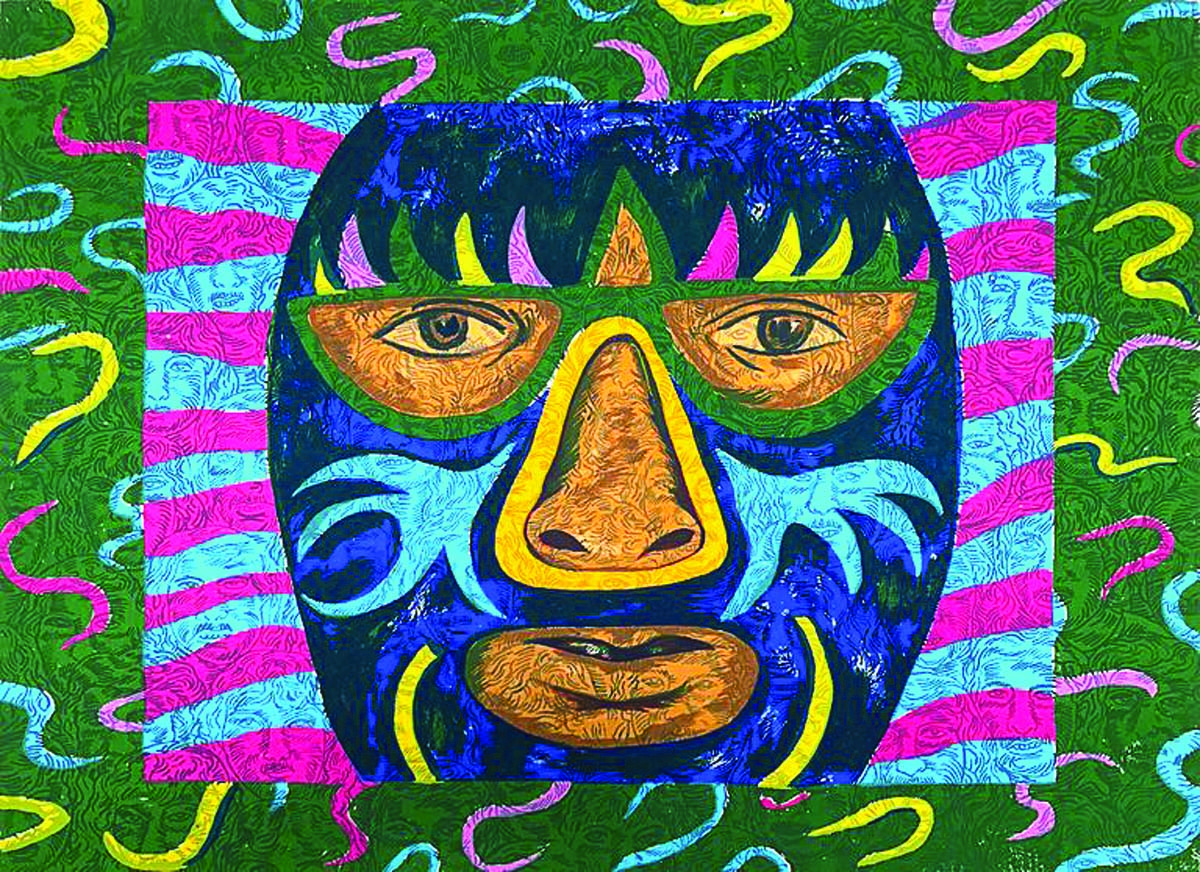
What struck me right from the get-go about the 16 serigraphs of Laguna Art Museum’s (LAM) upstairs exhibit is how immediate and vibrant each one looks. All pulled from its permanent collection, they were purchased by the museum in 1992 from Self Help Graphics & Art (SHG) in an acquisition of 170 screenprints by 90 artists. Yet the works in “Self-Help Graphics: 1983-1991” look as if they could have been made yesterday. Each radiates an unmistakable energy: the colors vibrate against one another, layered images multiply meanings through disrupted grids, and many kinds of borders are crossed.
The more I learned about SHG the more I understood this timelessness. The Boyle Heights art center/print shop has been operating at the intersection of art and social justice since 1973, with a reach that’s both local and global. For more than 45 years, it has thrown an annual Día de los Muertos celebration, with about 10,000 people now participating. Plus, SHG was founded by a nun. A screen-printer herself, Sister Karen Boccalero was inspired by yet another screen-printing nun.
Sister Mary Corita Kent was as active in the Pop Art era as Andy Warhol, yet she got little credit for the graphic wonders she created with Wonder Bread’s label. Her prolific oeuvre transmitted messages of love and a firm belief in justice and art for the masses. Hippies adopted her images as emblems for the counterculture. Corita’s Love Is Hard Work, with swipes of Roy G. Biv stacked above the title’s words would be familiar to anyone who’d ever perused a poster shop. The sister was a beloved teacher at Immaculate Heart College in LA until some cardinal declared her too “liberal” and “communist,” his accusations so breaking Corita’s heart that she returned to secular life (though she kept creating).
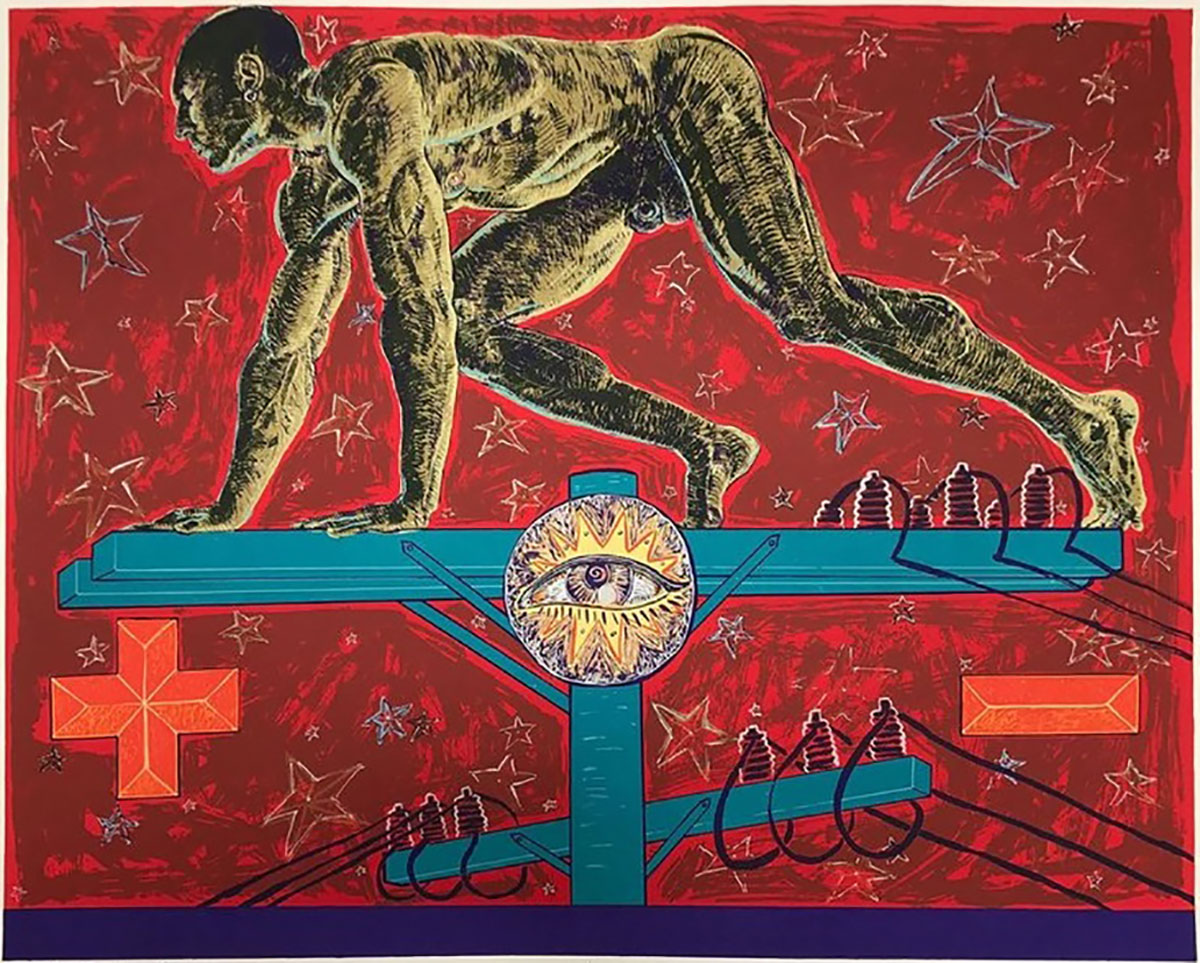
The silkscreen printing technique goes back to China’s Song Dynasty (960-1279). In the 20th century, the process was by far the least expensive way to mass-produce art, which became critical for protests. Each color is executed separately; so if a serigraph contains 16 colors, its creation is akin to making 16 works of art to produce one image. Its alchemical mysteries seem best learned through a hands-on approach. And Boccalero tapped that notion when she launched the Screenprint Atelier Program at SHG in 1980.
The ateliers in turn launched a wave of resistance and empowerment intertwined with the art making. The Chicana/o and Latinx artists who participated went on to become leaders, many of them professors, including Yreina Cervantez. The three-month workshops provided 12 artists with a master printer as teacher and all the materials and space needed to learn the craft. As each print was completed, it was mandatory the 11 others stopped what they were doing to gather, explains Cervantez in the video accompanying the exhibit. The artist would then detail the process she went through to produce the final result.
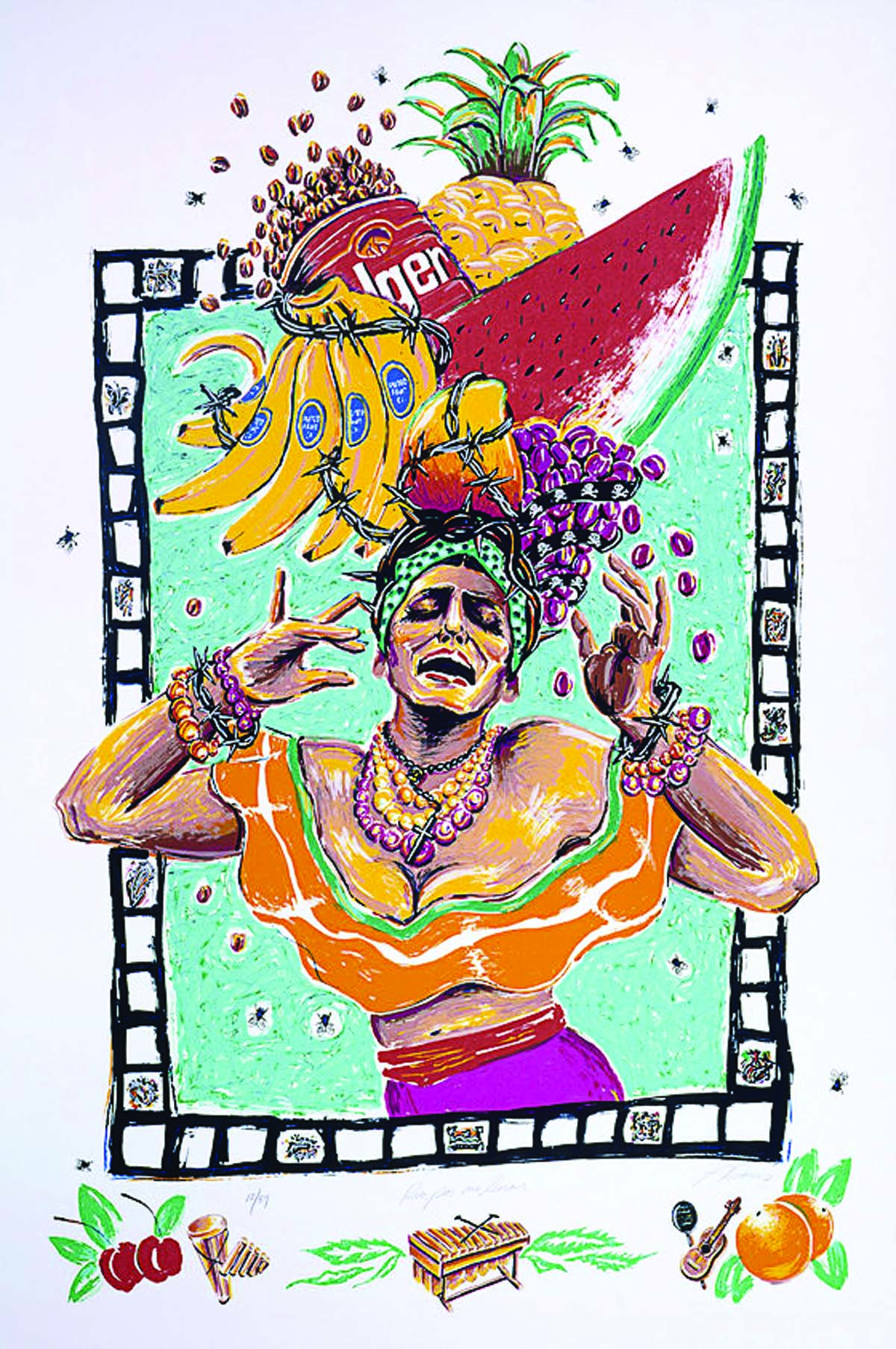
It was not only sharing techniques that made the ateliers amazing, according to the Cal State Northridge professor and artist, whose mural Ofrenda featuring Dolores Huerta you may have seen in downtown LA. But it was also articulating how each artist saw themselves and whether that was expressed through what they made. Cervantez’s Danza Ocelotl is not to be missed, though the fact it’s done with a mere four colors is astonishing. It has a deceptive two-dimensionality, with a frame and a flat mask over the face of a crowned woman—her visage containing the cosmos, her ancestors mingling with her own powerful presence. As you gaze into the print, it looks right back into you.
“Self-Help Graphics: 1983-1991” was supposed to close in May, but the exhibit has been extended until Sept. 22. People like it; the staff of the museum likes it. One docent told me he’s met some of the artists who’ve come to take a peek at a print they made and haven’t seen in decades. Another visitor told him she was the model for a child depicted in one screenprint in LAM’s collection and is related to the infant in Plumas Para Paloma, both by Glenna Boltuch Avila. The artist was commissioned to paint a mural for the 1984 Summer Olympics Arts Festival; L.A. Freeway Kids, located on the south side of the 101 freeway between Los Angeles and Main streets, was restored in 2012. As director of LA’s Citywide Mural program, Boltuch Avila has coordinated the creation of hundreds of murals, painting some 75 of her own.
The video playing is an oral history, titled Entre Tinta y Lucha, that was originally made in honor of SHG’s 45th anniversary last year. In it, Chaz Bojorquez describes how Boccalero rejected him at first, saying, “Graffiti is not art; it belongs in the street.” Bojorquez grew up in Highland Park, exploring cement riverbanks, hillsides and alleys, where he became obsessed with graffiti. But Boccalero claimed the art form was “‘anti-Chicano.’ Chicano is about family, migration, identity, farm workers, border issues . . .” explained Bojorquez. “Five to 10 years later, she gave me a one-man show there.”
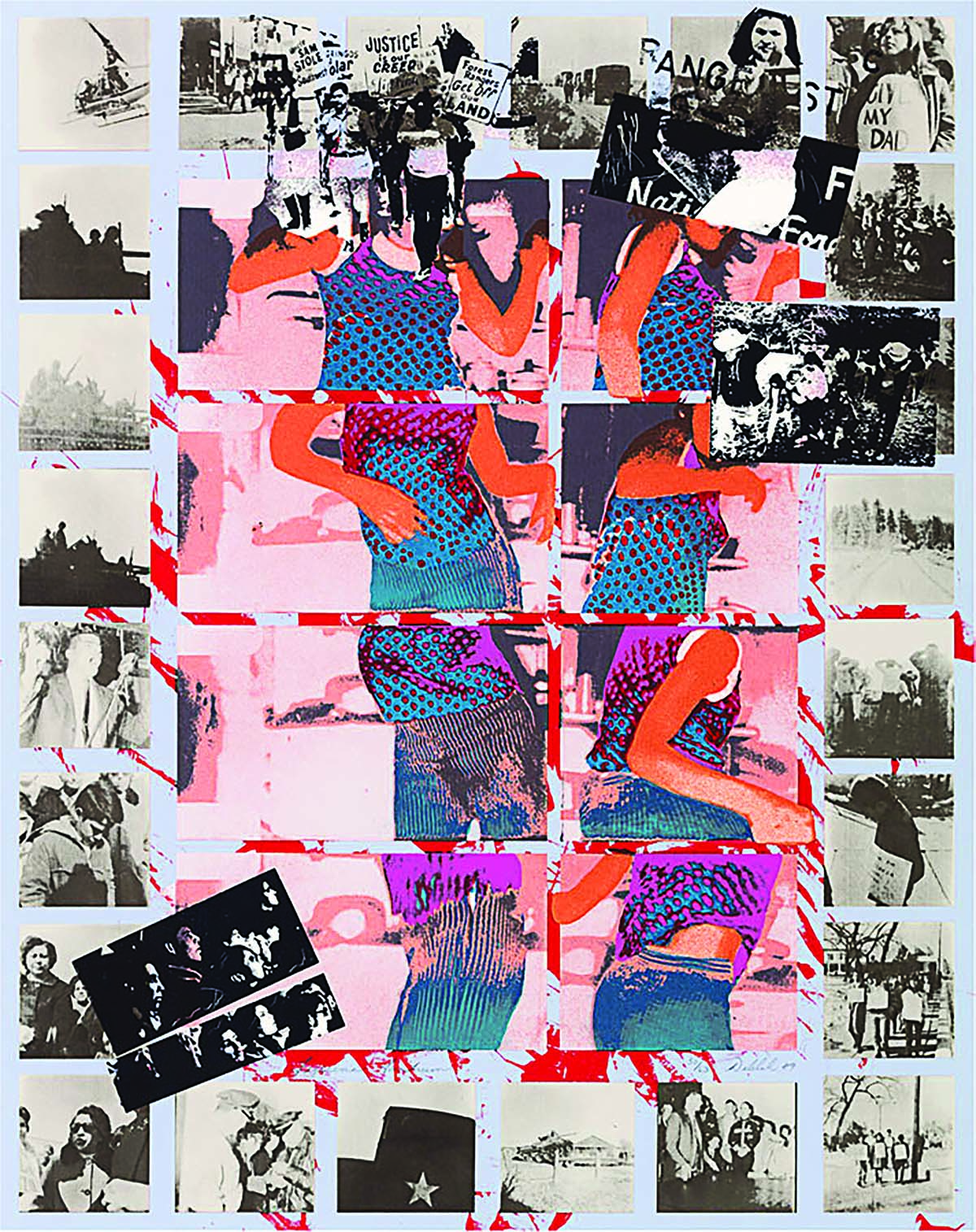
The show’s prints look fresh aesthetically, but the prevailing subject matter Boccalero defined to a young Bojorquez is, quite painfully, as relevant today as it was when LAM curated its first show from the acquisition in 1995. Consider what then-director Susan M. Anderson wrote in the catalog for the traveling exhibit, “Across the Street”:
“As art and culture from Mexico has consistently played a role in the history of art in California, and as current dramas relating to border issues and immigration unfold, the museum has identified the need to organize exhibitions that explore art and issues with roots on both sides of the border” (my emphasis).
Perhaps a young artist is at SHG right now, processing her reaction to the child concentration camps along the southern U.S. border in a vivid and devastating work of many colors.
Or just take a long, close look at Delilah Montoya’s Tijerina Tantrum. In hindsight, the 30-year-old print looks directly into our present.
“Self-Help Graphics: 1983-1991” at Laguna Art Museum, 307 Cliff Dr., Laguna Beach, (949) 494-8971; lagunaartmuseum.org. Open Fri.-Tues., 11 a.m.-5 p.m.; Thurs., 11 a.m.-9 p.m. Through Sept. 22. $5-$7.
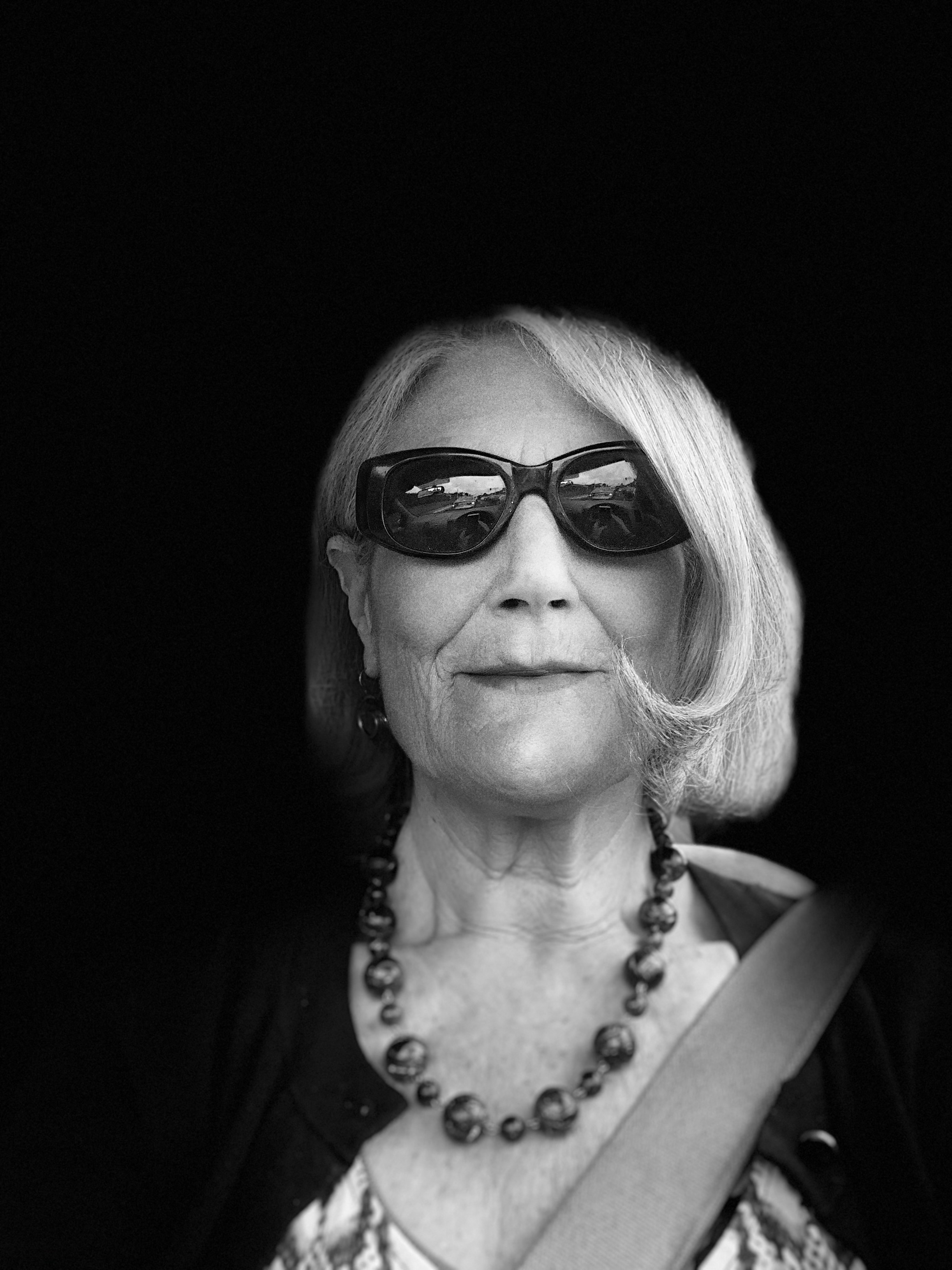
Lisa Black proofreads the dead-tree edition of the Weekly, and writes culture stories for her column Paint It Black.


Wow, incredible weblog structure! How lengthy have you been blogging for?
you make running a blog look easy. The whole look of your site is wonderful, as smartly
as the content material! You can see similar: najlepszy
sklep and here dobry sklep
It’s very interesting! If you need help, look here: hitman agency
Hello I am so happy I found your web site, I really found you by error, while I was browsing on Aol for something
else, Anyhow I am here now and would just
like to say cheers for a fantastic post and a all round enjoyable
blog (I also love the theme/design), I don’t have time to go through it all at the moment but
I have bookmarked it and also included your RSS feeds, so when I have time
I will be back to read more, Please do keep up the excellent work.
I saw similar here: ecommerce and also here: sklep online
Hello! I could have sworn I’ve been to this site
before but after going through some of the posts I realized it’s new to me.
Nonetheless, I’m certainly pleased I found it and I’ll be bookmarking it and checking back often! I saw similar here:
e-commerce and also here: dobry sklep
Amazing blog! Is your theme custom made or did you download it from somewhere?
A theme like yours with a few simple tweeks would really make
my blog shine. Please let me know where you got
your design. Bless you I saw similar here: Sklep internetowy
Have you ever thought about adding a little bit more than just your articles?
I mean, what you say is important and all. Nevertheless just imagine if
you added some great graphics or video clips to give your posts more, “pop”!
Your content is excellent but with images and video clips, this site could definitely be one of the very best in its field.
Superb blog! I saw similar here: Najlepszy sklep
Unquestionably believe that which you said. Your favorite justification seemed to be on the internet the easiest thing to be
aware of. I say to you, I definitely get irked while people consider worries that they just don’t
know about. You managed to hit the nail upon the top and also defined
out the whole thing without having side effect , people can take a signal.
Will likely be back to get more. Thanks I saw similar here: Sklep internetowy